WHAT DOES OUR BODY NEED TO FUNCTION PROPERLY?
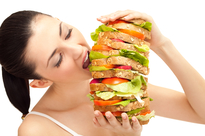
Nutrition supplies living organisms with the molecules that they need to keep them alive.
As we have heterotrophic nutrition, we are constantly taking in organic and inorganic molecules from our surrounding environment that our systems transform in order to obtain the needed energy to drive life processes and the raw material for the growth and repair of tissues. These organic and inorganic molecules that our cells need are referred to as nutrients.
Feeding is the process by which those nutrients are obtained from the environment, while nutrition includes a number of processes that allow organisms to transform those nutrients so our cells can use them.
Our health depends on our diet, or the kind of food that we eat. Not including the necessary nutrients and in the correct proportion, may result in malnutrition, which could lead to malfunctioning of the body and often times to illness.
(Metabolism, 2015)
As we have heterotrophic nutrition, we are constantly taking in organic and inorganic molecules from our surrounding environment that our systems transform in order to obtain the needed energy to drive life processes and the raw material for the growth and repair of tissues. These organic and inorganic molecules that our cells need are referred to as nutrients.
Feeding is the process by which those nutrients are obtained from the environment, while nutrition includes a number of processes that allow organisms to transform those nutrients so our cells can use them.
Our health depends on our diet, or the kind of food that we eat. Not including the necessary nutrients and in the correct proportion, may result in malnutrition, which could lead to malfunctioning of the body and often times to illness.
(Metabolism, 2015)
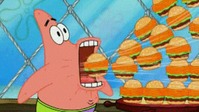
If you recall from the previous unit, a poor diet can lead to some non-infectious diseases such as endocrine and metabolic diseases or deficiency diseases. We will focus on obesity and diabetes as examples of endocrine and metabolic diseases, and look into anaemia as a deficiency disease. However, there are many other diseases directly related to a poor diet so it is very important that you understand what a balanced diet is and how to develop healthy eating habits.
(Media.giphy.com, 2015)
A balanced diet provides all the nutrients in the correct amounts needed to carry out the life processes. The Mediterranean diet is a very good example of a balanced diet, as we will see in more detail.
There are also psychological diseases that are not directly related to a poor diet, but would lead to eating disorders and therefore later complications such as anorexia and bulimia.
(Media.giphy.com, 2015)
A balanced diet provides all the nutrients in the correct amounts needed to carry out the life processes. The Mediterranean diet is a very good example of a balanced diet, as we will see in more detail.
There are also psychological diseases that are not directly related to a poor diet, but would lead to eating disorders and therefore later complications such as anorexia and bulimia.
Task 2a: Obesity Mindmap.
This task can be done by hand on paper, or in a Google Doc. If you want to experiment with your NSD read on, OR draw a mind-map to anser the following questions by hand.
Answer the following questions using brief and clear language, and then use the answers to produce a mindmap.
Extension Activity: Produce a colourful and informative leaflet to explain the dangers of diabetes and include some tips on how to avoid it.
This task can be done by hand on paper, or in a Google Doc. If you want to experiment with your NSD read on, OR draw a mind-map to anser the following questions by hand.
- In your NSD, click "Add-ons", then "Get Add-ons". Search for "Mindmeister" and Click "Free", then "Accept".
- This App can be used to create mind-maps from bullet-point lists.
- Click "More" on the toolbar and select the bullet-point option. Next to this is "Increase indent".
- Experiment how the App works with different indentations in your list by highlighting your list, clicking "Add-ons", "Mindmeister" and "Insert as Mindmap".
- You can also watch this video
Answer the following questions using brief and clear language, and then use the answers to produce a mindmap.
- What is obesity?
- How can you avoid obesity?
- How does it affect your body/systems?
- Give at least three examples of other diseases that are/can be directly caused by obesity.
- What is diabetes?
- There are three types of diabetes, type 1, type 2 and gestational diabetes. Which type is it more common and due to a poor diet, high in sugars?
Extension Activity: Produce a colourful and informative leaflet to explain the dangers of diabetes and include some tips on how to avoid it.
TYPES OF NUTRIENTS
If we look at the chemical composition of nutrients, we can differentiate between organic and inorganic nutrients. Carbohydrates, lipids and proteins, are organic nutrients, and vitamins, water and minerals are inorganic nutrients.
The majority of foods have several types of nutrients, but some such as white sugar or table salt only have one. Let’s look at the different nutrients in more detail.
Carbohydrates: there are two types: monosaccharides and polysaccharides. Their main function is to provide our cells with energy.
*Monosaccharides are the simplest carbohydrates, for example glucose, and fructose, found in honey and fruits. They are soluble in water, so they are easily transported in blood and dissolve in the cytoplasm of the cell. Glucose is oxidised (used) in cellular respiration to release energy for different processes such as active transport, cell division, muscle contraction etc. It is therefore the main source of energy for our cells.
*Polysaccharides: Complex molecules formed by joining several monosaccharides together. They must be split into simple monosaccharides in order to be used by our cells. They are water insoluble so they are good stores of energy. The most important one involved in human nutrition is starch, which is made by joining many thousands of glucose molecules together. Cellulose, contained in vegetable fibre, also belongs to this group, and even though we cannot use it as a source of energy plays an important role in our diets, as we will see later.
Excess carbohydrates can be stored as glycogen and fats.
The majority of foods have several types of nutrients, but some such as white sugar or table salt only have one. Let’s look at the different nutrients in more detail.
Carbohydrates: there are two types: monosaccharides and polysaccharides. Their main function is to provide our cells with energy.
*Monosaccharides are the simplest carbohydrates, for example glucose, and fructose, found in honey and fruits. They are soluble in water, so they are easily transported in blood and dissolve in the cytoplasm of the cell. Glucose is oxidised (used) in cellular respiration to release energy for different processes such as active transport, cell division, muscle contraction etc. It is therefore the main source of energy for our cells.
*Polysaccharides: Complex molecules formed by joining several monosaccharides together. They must be split into simple monosaccharides in order to be used by our cells. They are water insoluble so they are good stores of energy. The most important one involved in human nutrition is starch, which is made by joining many thousands of glucose molecules together. Cellulose, contained in vegetable fibre, also belongs to this group, and even though we cannot use it as a source of energy plays an important role in our diets, as we will see later.
Excess carbohydrates can be stored as glycogen and fats.
Lipids: Lipids, also known as fats are an important source of energy. They are particularly valuable as energy storage because they are insoluble in water. They are stored in the cells of adipose tissue. Lipids are formed by joining three molecules of fatty acids to one molecule of glycerol. There are two types of lipids: fats, which are solid at room temperature and oils, which are liquid at room temperature. Lipids are a main component of cell membranes, forming barriers between watery environments, such as the cell and its surrounding. They also provide insulation (electrical insulation around nerve cells, and thermal insulation beneath the skin). Steroids hormones, including sex hormones are made from cholesterol. The most familiar/known lipids are triglycerides and cholesterol.
Proteins: These nutrients are the most important macromolecules. Around 50% of the dry cell mass in our body are proteins. Proteins carry out many different functions such as:
Important Note: (enzymes regulate all the metabolic reactions in our body)
Proteins are made of long chains of subunits called amino acids joined together. There are 20 different amino acids. All proteins are made from the same 20 amino acids that are joined in a vast number of different orders. Out of these 20 amino acids, 12 can be produced by our body, however, there are 8 amino acids we cannot produce and must be provided by our diet. We refer to those as the essential amino acids. Amino acids are soluble so they are easily transported in living organisms.
- structural materials - muscles, tendons, bones, nails and hair
- transport molecules, such as haemoglobin in blood,
- hormones, such as insulin,
- natural catalyst, as all enzymes are proteins,
- in defence against diseases (antibodies).
Important Note: (enzymes regulate all the metabolic reactions in our body)
Proteins are made of long chains of subunits called amino acids joined together. There are 20 different amino acids. All proteins are made from the same 20 amino acids that are joined in a vast number of different orders. Out of these 20 amino acids, 12 can be produced by our body, however, there are 8 amino acids we cannot produce and must be provided by our diet. We refer to those as the essential amino acids. Amino acids are soluble so they are easily transported in living organisms.
Vitamins and mineral: Inorganic substances essential for the body as they regulate metabolic reactions as well as allow our bodies to use other nutrients efficiently. Some minerals make up the structure of our body, for example calcium is an important constituent in bones and teeth. Some other minerals are used to regulate the nervous system, such as sodium and potassium. And Iron takes part in oxygen transport. Vitamin D is needed for the absorption of calcium. And vitamin C aids with the absorption of iron.
Vitamins and mineral are only needed in very small amounts, but lacking the necessary vitamins can cause a variety of problems and illnesses.
Vitamins and mineral are only needed in very small amounts, but lacking the necessary vitamins can cause a variety of problems and illnesses.
Water: It is essential for life as we know it. Water forms about 70% of the human body. (2/3 of this water is in the cytoplasm of cells, and the other 1/3 in tissue fluid and blood plasma). Water acts as a solvent in metabolic reaction, transport media for substances between different parts of the body and regulates body temperature.
We lose water every day in urine, faeces, exhaled air and sweat that must be replaced by water in the diet.
We lose water every day in urine, faeces, exhaled air and sweat that must be replaced by water in the diet.
ENERGY VALUE OF DIFFERENT FOODS
Food is the fuel that drives life processes as energy is released from the different foods we eat during cellular respiration. The three main energy-providing organic molecules found in food are fats, carbohydrates and proteins, each having a different value.
Molecules | Energy contents (kJ/g) | Energy content (cal/g) |
Fats | 39 | |
Carbohydrates | 20 | |
Proteins | 17 |
If you recall from previous years, a joule (J) is the SI unit of energy. The amount of energy contained in food is measured in either joules (J) or calories (cal). However, when talking about food, most people talk about calories. But, what is a calorie? A calorie is the amount of energy needed to raise the temperature of 1 cm3 (1 mL) of water 1 ºC.
In food labels, as joules and calories are small units, kilojoules and kilocalories are more frequently used to describe the energy values of food.
1calorie = 4.2 joules
Remember that not everyone needs the same amount of calories per day, as our energy requirements will be different according to our age, gender and life style, among others.
In food labels, as joules and calories are small units, kilojoules and kilocalories are more frequently used to describe the energy values of food.
1calorie = 4.2 joules
Remember that not everyone needs the same amount of calories per day, as our energy requirements will be different according to our age, gender and life style, among others.
Task 2b:
1) Copy the above table into your NSD. Calculate the number of calories per gram for each of the main energy-providing organic molecules and include it in the table above.
2) Create a glossary of key words.
In your NSD, create a table with two columns and extract all the keywords you can find on this page. Use your internet research skills to create a clear and memorable definition of each one. Try not to copy and paste as you will remember your own words much better!
Extension task: Copy your table into a shared document and share it with someone in your class. Do you agree on the definitions? Can you improve your friend´s glossary?
1) Copy the above table into your NSD. Calculate the number of calories per gram for each of the main energy-providing organic molecules and include it in the table above.
2) Create a glossary of key words.
In your NSD, create a table with two columns and extract all the keywords you can find on this page. Use your internet research skills to create a clear and memorable definition of each one. Try not to copy and paste as you will remember your own words much better!
Extension task: Copy your table into a shared document and share it with someone in your class. Do you agree on the definitions? Can you improve your friend´s glossary?
FOOD AND THE IDEAL DIET
Classification of different food types.
Food type | Example | Nutrients |
Meat, fish and eggs | Chicken, beef, cod | Proteins, lipids, iron and vitamin B2 |
Fruits and vegetables | Tomatoes, lettuce, apples, peas, carrots | Various vitamins and minerals. Carbohydrates. |
Starchy foods | Potatoes, rice, bread and pasta | Carbohydrates, proteins, vitamin B1 and iron. |
Sugars | Sugar, sweets, chocolates | Simple carbohydrates |
Fats and oils | Butter, olive oil | Vitamin A and D and in olive oil there is also vitamin E |
Pulses and nuts | Lentils, chick peas, almonds, walnuts | Various vitamins and minerals, proteins |
Milk and dairy | Milk, yogurt and cheese | Proteins, lipids, calcium and vitamins A, B and D |
Task 2c: Produce a table with 8 foods you often consume and look for the different nutrients those foods contain.
Extension: Compare your table with the person´s sitting next to you. What positive advice would you give them based on the types of nutrients they consume?
Extension: Compare your table with the person´s sitting next to you. What positive advice would you give them based on the types of nutrients they consume?
HEALTHY PRACTICES
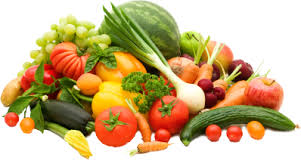 (Cambridgeproduce.co.uk, 2015)
(Cambridgeproduce.co.uk, 2015)In order to avoid health problems due to an inadequate diet, you should follow the following advice:
Eat a variety of foods: we need to eat food from all groups in order to maintain a balanced diet.
Eat the right amount each and every day: We don’t all have the same dietary needs. So it is important to eat the right amount of foods according to your sex, age and life style. As you should know, when you eat more calories than needed, the excess calories will be stored as extra fat in your adipose tissues.
You should eat fruit and vegetable on a daily basis: among other nutrients, fruits and veggies are a good source of vitamins, minerals and fibre. Dietary fibre is mainly indigestible plant cellulose which provides the bulk for faeces. Fibre will help push the food along the gut. A shortage of fibre can cause constipation and can also be a factor in the development of bowel cancer. Vitamins can be destroyed easily when heated. Also light or even oxygen in the air can destroy vitamins. That is why is important to include plenty fresh fruits and vegetables in your diet. Fruits and veggies also have antioxidants, which help prevent early aging of cells and cancer.
Alternate eggs, meat and fish as protein sources: Poultry and game are healthier than read meat, as red meat has more LDH cholesterol, ‘bad cholesterol’, which accumulates in your arteries causing cardiovascular diseases. Animal fats in general will have more LDH cholesterol than other sources of fats/oils, such as blue fish or nuts. It is also important to remember that too much animal protein could lead to an excess of uric acid in blood, which accumulates in joints causing pain.
What about eggs? How often should we eat eggs?, and how many? There are lots of discrepancy among nutritionists around the world on this issue Eggs are a very nutritious, as they not only have high quality and easily digested proteins, but also minerals, vitamins, etc. So, why do eggs sometime have such a bad reputation?. Let’s do our own investigation and try to come up with an educated answer!
Pulses (lentils, garbanzos and other beans), as well as nuts are very nutritious and should be eaten daily or often.
Better use vegetable oils than butter, as vegetable oils are a good source of HDL cholesterol and triglycerides, which our system needs. Olive oil is the best choice followed by sunflower seeds oil and then other vegetable oils.
Having a complete breakfast is important as it provides energy for the first hours of the day after fasting all night. It is better to eat smaller amounts of food regularly and more often, than big meals two or three times a day.
Drink 1.5 to 2 litres of water a day. Consume salt with moderation.
Avoid alcohol as it is toxic for the nervous system as well as for the liver.
Avoid ‘junk food’, such as processed food, sodas, and other non-nutritious snacks, containing lots of saturated fats, additives, flavour enhancers (such as MSG), and salt, among others.
Eat a variety of foods: we need to eat food from all groups in order to maintain a balanced diet.
Eat the right amount each and every day: We don’t all have the same dietary needs. So it is important to eat the right amount of foods according to your sex, age and life style. As you should know, when you eat more calories than needed, the excess calories will be stored as extra fat in your adipose tissues.
You should eat fruit and vegetable on a daily basis: among other nutrients, fruits and veggies are a good source of vitamins, minerals and fibre. Dietary fibre is mainly indigestible plant cellulose which provides the bulk for faeces. Fibre will help push the food along the gut. A shortage of fibre can cause constipation and can also be a factor in the development of bowel cancer. Vitamins can be destroyed easily when heated. Also light or even oxygen in the air can destroy vitamins. That is why is important to include plenty fresh fruits and vegetables in your diet. Fruits and veggies also have antioxidants, which help prevent early aging of cells and cancer.
Alternate eggs, meat and fish as protein sources: Poultry and game are healthier than read meat, as red meat has more LDH cholesterol, ‘bad cholesterol’, which accumulates in your arteries causing cardiovascular diseases. Animal fats in general will have more LDH cholesterol than other sources of fats/oils, such as blue fish or nuts. It is also important to remember that too much animal protein could lead to an excess of uric acid in blood, which accumulates in joints causing pain.
What about eggs? How often should we eat eggs?, and how many? There are lots of discrepancy among nutritionists around the world on this issue Eggs are a very nutritious, as they not only have high quality and easily digested proteins, but also minerals, vitamins, etc. So, why do eggs sometime have such a bad reputation?. Let’s do our own investigation and try to come up with an educated answer!
Pulses (lentils, garbanzos and other beans), as well as nuts are very nutritious and should be eaten daily or often.
Better use vegetable oils than butter, as vegetable oils are a good source of HDL cholesterol and triglycerides, which our system needs. Olive oil is the best choice followed by sunflower seeds oil and then other vegetable oils.
Having a complete breakfast is important as it provides energy for the first hours of the day after fasting all night. It is better to eat smaller amounts of food regularly and more often, than big meals two or three times a day.
Drink 1.5 to 2 litres of water a day. Consume salt with moderation.
Avoid alcohol as it is toxic for the nervous system as well as for the liver.
Avoid ‘junk food’, such as processed food, sodas, and other non-nutritious snacks, containing lots of saturated fats, additives, flavour enhancers (such as MSG), and salt, among others.
Task 2d: Answer the following questions in your NSD. You do not need to copy the questions if you write in full and clear sentences.
- Name three important nutrients.
- How many different amino acids are there?
- Amino acids are the subunits of a very important macromolecule; what is the name of that macromolecule?
- What are the building units of complex carbohydrates called?
- Why are minerals important for our health? And vitamins?
- What are some diseases directly related to an unhealthy diet?
- Why do we need to eat carbohydrates?
- Give 3 biological functions of proteins.
- Why do we need to eat?
References
Cambridgeproduce.co.uk,. (2015). Cambridge Produce Brokers | Fresh fruit and veg Delivery. Retrieved 4 September 2015, from http://cambridgeproduce.co.uk/
Healthy-documents.info,. (2014). Why Junk Food is Bad for Your Fitness Efforts. Retrieved 4 September 2015, from http://www.healthy-documents.info/junk-food-bad-for-your-health/
Media.giphy.com,. (2015). Retrieved 4 September 2015, from https://media.giphy.com/media/K4x1ZL36xWCf6/giphy-facebook_s.jpg
Metabolism, F. (2015). 7 Unhealthy Eating Habits You Should Drop to Lose Weight. The Fast Metabolism Diet Community. Retrieved 4 September 2015, from http://thefastmetabolismdietcommunity.com/7-unhealthy-eating-habits-you-should-drop-to-lose-weight/
Namaste Nutritionist,. (2015). How to Find Fresh Olive Oil. Retrieved 4 September 2015, from http://namastenutritionist.com/how-to-find-fresh-olive-oil/
Cambridgeproduce.co.uk,. (2015). Cambridge Produce Brokers | Fresh fruit and veg Delivery. Retrieved 4 September 2015, from http://cambridgeproduce.co.uk/
Healthy-documents.info,. (2014). Why Junk Food is Bad for Your Fitness Efforts. Retrieved 4 September 2015, from http://www.healthy-documents.info/junk-food-bad-for-your-health/
Media.giphy.com,. (2015). Retrieved 4 September 2015, from https://media.giphy.com/media/K4x1ZL36xWCf6/giphy-facebook_s.jpg
Metabolism, F. (2015). 7 Unhealthy Eating Habits You Should Drop to Lose Weight. The Fast Metabolism Diet Community. Retrieved 4 September 2015, from http://thefastmetabolismdietcommunity.com/7-unhealthy-eating-habits-you-should-drop-to-lose-weight/
Namaste Nutritionist,. (2015). How to Find Fresh Olive Oil. Retrieved 4 September 2015, from http://namastenutritionist.com/how-to-find-fresh-olive-oil/

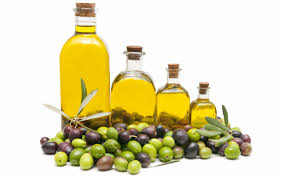
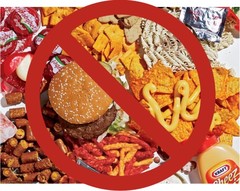
No comments:
Post a Comment